SaaS Marketing Guide
How to Build a SaaS Marketing Budget – Business Benchmarks & Breakdowns
Book a FREE SEO Strategy Consultation >
Further Reading:
- SaaS Marketing Strategy
- SaaS Content Marketing
- SaaS SEO
- SaaS Account Based Marketing
- SaaS Email Marketing
- SaaS Inbound Marketing
- SaaS Retargeting
- SaaS Marketing Budget
- SaaS Marketing Plan
- SaaS Referral Marketing
- SaaS Demand Generation
- SaaS Customer Journey
- SaaS CMO Strategy
- SaaS link building
- SaaS Lead Generation
- SaaS Landing Page Examples
- SaaS CMS
- SaaS Customer Churn
- SaaS Marketing Automation
- SaaS Marketing Campaigns
- SaaS Marketing Agency
- SaaS SEO Agency
- SaaS Link Building Services
It doesn’t matter whether you’re a startup or an established company; creating a SaaS marketing budget takes significant time and effort.
Every company in the industry will have a different way of calculating theirs. You may use an existing SaaS marketing budget template or one of the countless online resources offering various calculations. Either way, every business will arrive at different figures in the end.
The whole process can be something of a minefield, so where do you even begin in building your budget?
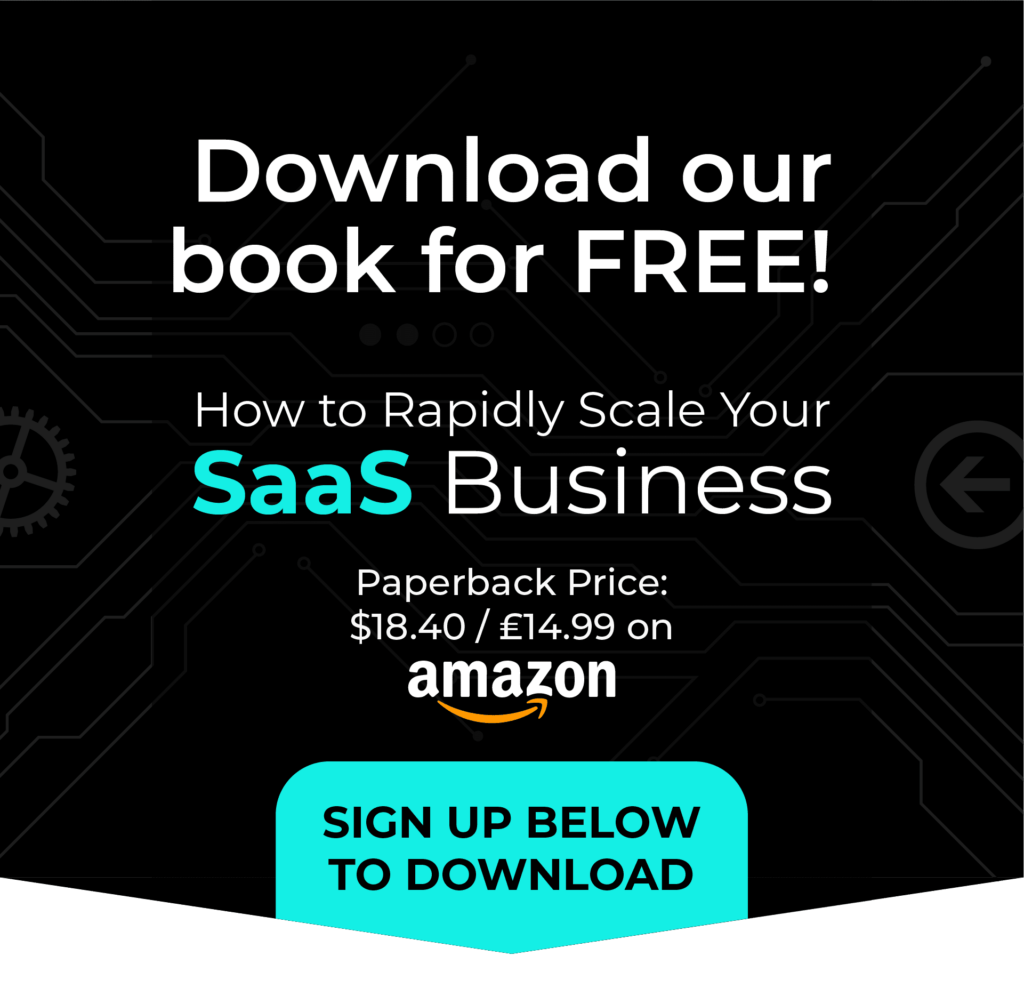
All good SaaS budgets go beyond the numbers alone. You need to have a solid grasp of the industry, your brand, and, perhaps most importantly, your customers.
Taking this understanding and combining it with an in-depth knowledge of the best SaaS marketing strategies means you’ll have all the tools you need to set a budget that suits your business down to the ground.
We’ve put together a guide to SaaS budgeting to help you create a tailored plan that’ll allow you to nail your marketing strategy at the same time.
We will go through:
- What is a typical SaaS marketing budget percentage?
- How much do SaaS companies spend on marketing?
- Does spending more on marketing equal more success?
- How to build a B2B SaaS marketing budget from scratch
- SaaS marketing budget benchmarks: Things to keep an eye on
- Why an inbound SaaS marketing strategy is so important
- Establishing a SaaS marketing budget: Setting goals and seeking expertise
- FAQs about SaaS marketing budgets
What is a typical SaaS marketing budget percentage?
If we take an average across all industries since 2018, the answer is around 10% of revenue. There was a sizable drop in spending in 2021 when, according to a Gartner study, the average plummeted to a record low of 6.4% compared to 11% in 2020. But there has been a resurgence over the past year, with this number having recovered to 9.5% as of 2022.

It’s important to note the varying degree of factors that contribute to marketing spend. For instance, B2C companies often spend more than B2Bs. Startups often spend a greater percentage than established companies to climb the initial rungs of the ladder at a faster pace. SaaS companies generally have more to spend by the very nature of their business model.
How much do SaaS companies spend on marketing?
The most successful SaaS companies spend around half their revenue on marketing, and for startups, this can be considerably more.
This is much higher than the overall average, but remember, SaaS budgeting is different. These companies don’t have the same outgoings as an e-commerce brand, for example. You are already saving money on materials, brick-and-mortar storage facilities, and supply chain management costs.
Does spending more on marketing equal more success?
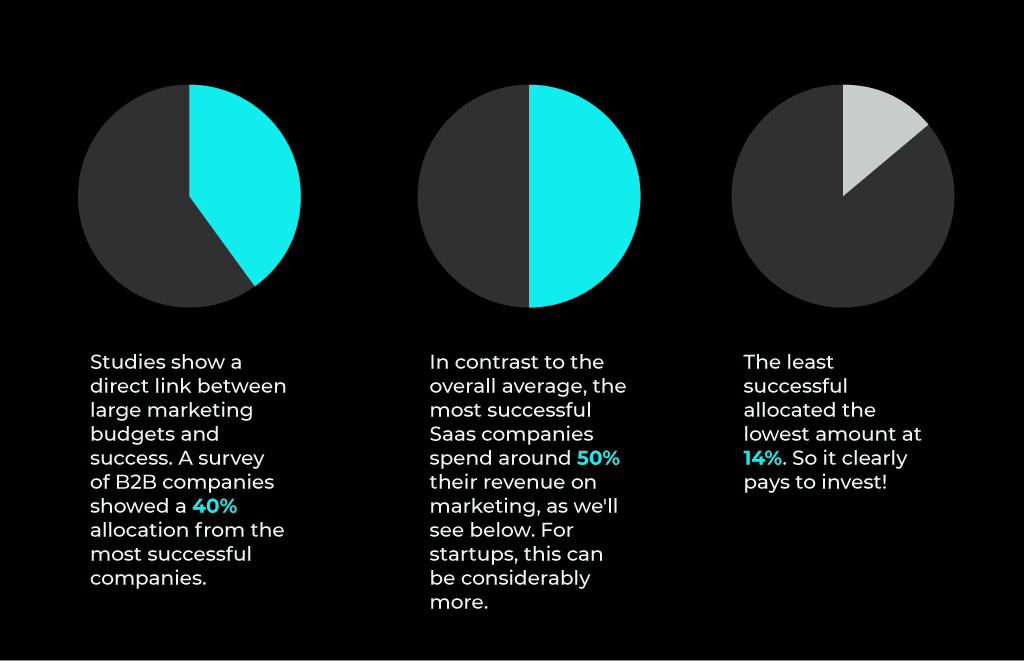
Studies show a direct link between large marketing budgets and success. A survey of B2B companies showed a 40% allocation from the most successful companies. The least successful allocated the lowest amount at 14%. So it pays to invest!
How to calculate your SaaS marketing budget
Sales and marketing as a percentage of revenue
As we’ll see from the figures below, marketing budgets for successful and established SaaS companies sit at an average of around 50% of their revenue. But this percentage will vary depending on the kind of services you sell, your volume of sales, and your profit.
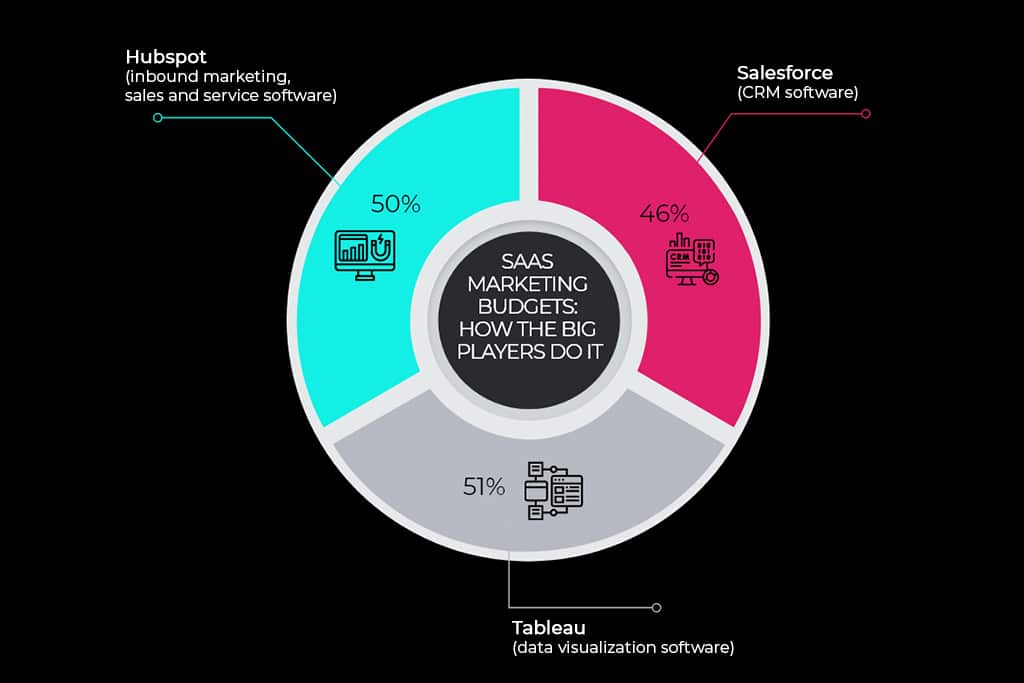
The brands we’ve looked at above have entirely different portfolios, but the one thing they all have in common is an excellent content strategy. All three understand the need to explain their product, its uses, and how it stands out from its competitors.
After all, it’s not just about how much you budget but how effectively you use that money.
At accelerate agency, we understand precisely how a strong content marketing strategy helps to establish your brand as an authority and the financial success that stems from that position.
From creating customer personas to needs-led keyword research and structuring content that targets every layer of the sales funnel, developing strategies for SaaS companies is one of our points of expertise.

LTV: CAC ratio
The Lifetime Value to Customer Acquisition Cost (LTV:CAC) ratio is a critical metric used by SaaS companies to assess the efficiency and sustainability of their marketing efforts. This ratio compares the lifetime value of a customer (LTV) to the cost of acquiring that customer (CAC).
A healthy LTV:CAC ratio indicates that the revenue generated from a customer over their lifetime exceeds the cost incurred to acquire them.
To calculate the LTV:CAC ratio, first determine the average customer lifetime value by multiplying the average revenue per customer by the average customer lifespan. Next, calculate the customer acquisition cost by dividing the total marketing and sales expenses by the number of new customers acquired within a specific period. Finally, divide the LTV by the CAC to obtain the ratio.
A ratio greater than 3:1 is generally considered ideal, indicating that a customer’s lifetime value significantly outweighs the cost of acquisition. A ratio below 1:1 suggests that the cost of acquiring customers exceeds their value, highlighting the need for optimization in marketing and sales strategies.
Goal-based budgeting
Goal-based budgeting is a strategic approach to allocating marketing resources based on predefined business objectives and performance targets. Rather than relying on arbitrary budget figures or industry benchmarks, goal-based budgeting aligns marketing investments with specific goals such as revenue growth, customer acquisition, or market expansion.
To implement goal-based budgeting, start by setting SMART goals (Specific, Measurable, Achievable, Relevant, Time-bound) that are directly linked to business outcomes.
Next, identify the marketing strategies and tactics required to achieve these goals, along with associated costs. Allocate resources based on the estimated budget required to execute each strategy effectively.
By adopting a goal-based budgeting approach, SaaS companies can prioritize investments in initiatives that directly contribute to achieving their strategic objectives. This allows for greater flexibility and agility in budget allocation, enabling companies to adapt quickly to changing market dynamics and maximize return on investment (ROI) from their marketing efforts.
How to build a B2B SaaS marketing budget from scratch
So, we know a SaaS marketing budget is important, but wading in and spending your money without having a solid plan in place would be foolish. Be sure to answer the following questions about your business before you begin to consider creating your SaaS budget:
- What are your current liabilities and expenses?
- What’s your intended growth for the next 12 months?
- What’s your Customer Lifetime Value (CLV)?
- What’s your Annual Recurring Revenue (ARR)?
- What are your goals?
- Are you expecting to expand your product range?
- Who will carry out your content marketing?
With all of these questions answered, you’ll have sight of the bigger picture and the kind of investment you can afford to make.
However great your previous marketing experience is, it’s essential to understand that developing a hard-hitting SaaS marketing strategy is a completely different beast from crafting one for the average business. Developing these types of strategies is something that we at accelerate agency do for SaaS brands daily.
We can help market complicated and technical products in an accessible way with high-quality, traffic-driving SEO content that delivers actual results. Our approach helps to generate greater industry exposure for your business by expanding your digital footprint across relevant industry publications, forums and external review sites such as the G2 Crowd SaaS review website.
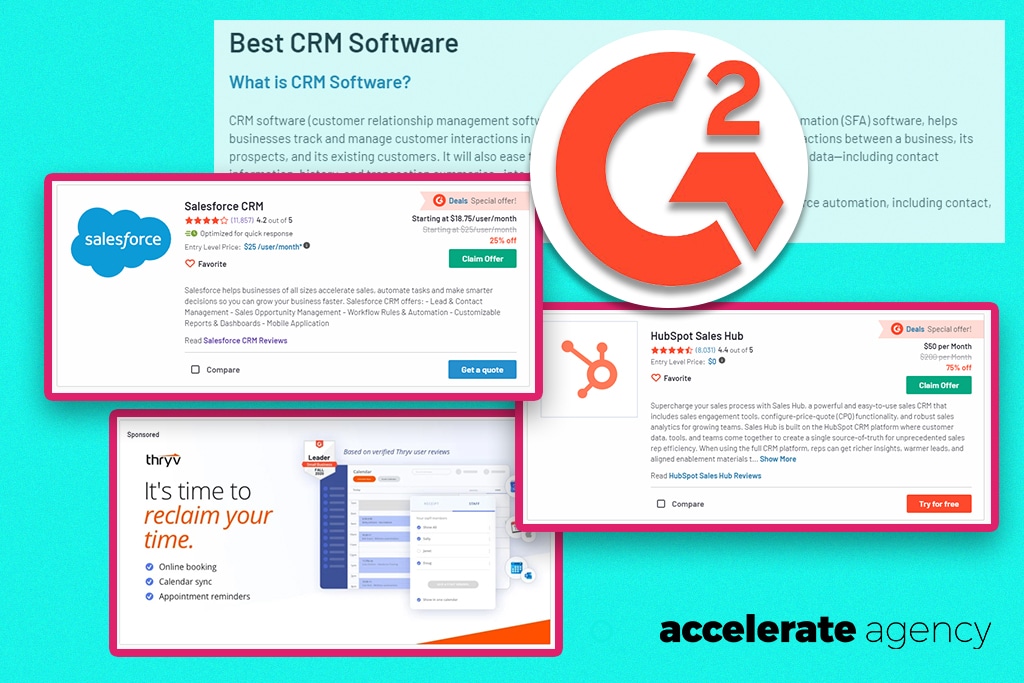
These review websites cover a range of related SaaS products and provide a great way of getting your brand out there. Such mentions provide direct links to your site and give an unbiased opinion, supercharging your credibility.
Learn more about how to rapidly scale your SaaS business through targeted marketing approaches by downloading our free eBook.
B2B SaaS marketing budget allocation: How much to spend
As we have already mentioned, there are many factors to consider when allocating your marketing budget. One of them is the size of your business and how prudent it has shown to be to invest a large percentage of your revenue in marketing at all levels, from startup to stable growth.
For example, a high-growth startup with a total marketing budget of $800,000 might typically spend $140,000 of that on thought leadership SEO i.e. authentic and genuine content.
A moderate growth B2B SaaS business might spend $130,000 of a $590,000 budget on the same thing, and a company at a stable level of growth might spend $180,000 of a $470,000 budget.
Of course, there are other avenues to explore, such as PR, email marketing, and LinkedIn advertising. However, the above examples show how valuable thought leadership SEO is considered at all levels of the industry.
It speaks volumes that the marketing budget percentage allocated to it only increases the more successful the company. Talk to us to see how we can help best utilize yours.
Further considerations for startups
Redpoint venture capitalist Tomasz Tunguz studied SaaS marketing budgets of several leading companies and found an initial marketing allocation of 80-120% of revenue. Once established, the amount gradually decreased to around the 50% mark.
This level of initial investment is understandable, given the competitive nature of the industry and the time it takes for a business to become well-known. This research dates back to 2013 but still holds firm today.
SaaS marketing budget benchmarks: Things to keep an eye on
It’s worth taking a breather here to remind ourselves of the crucial benchmarks it’s prudent to observe to ensure the success of your business and its marketing spend. There are a few balls to keep in the air:
- MRR (Monthly Recurring Revenue) – the revenue your business makes monthly. Basically, this boils down to the number of customers you have multiplied by the average amount one pays.
- ARPU (Average Revenue Per User) – the amount of revenue generated per customer. To work this out, divide your MRR by the number of customers you have.
- Revenue churn rate – how much your business is losing on a monthly basis as customers unsubscribe from your product.
- ARR (Annual Recurring Revenue) – the amount of money you’re expecting your company to generate annually. Multiply your MRR by 12 to get this number.
Why an inbound SaaS marketing strategy is so important
Let’s take a quick look at the inbound vs. outbound marketing debate. Outbound marketing is more direct, covering cold calls, huge advertising campaigns, direct mail, and other traditional methods. Lots of business leaders throw their hats into the outbound ring, given the more immediate rewards.
However, inbound costs an average of $135 per lead, compared to $332 for outbound.
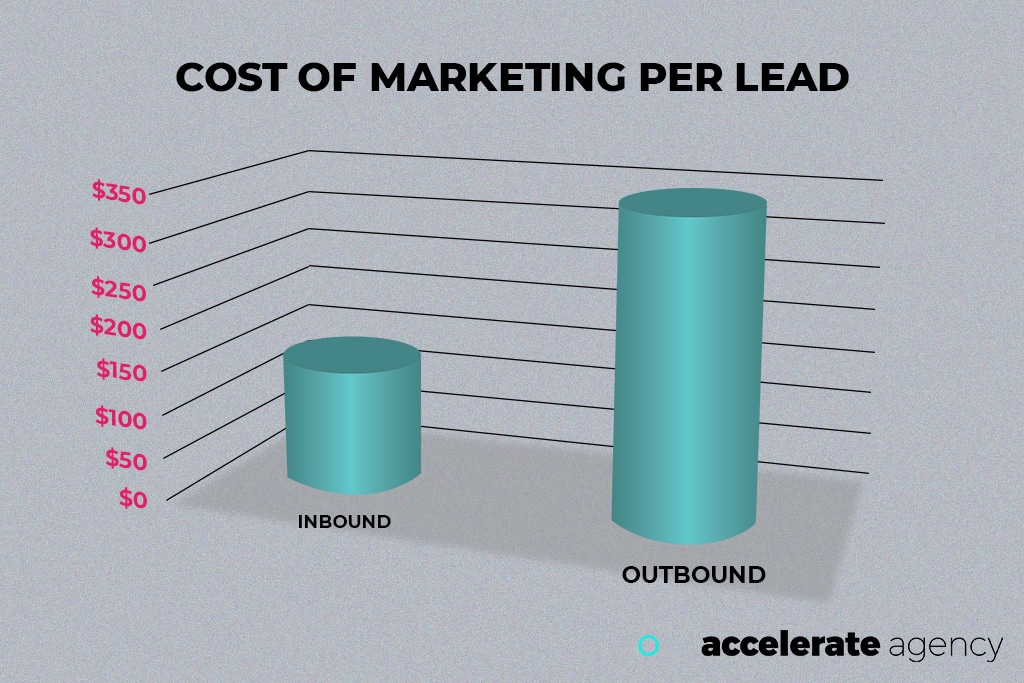
When it comes to inbound, you may be waiting a little longer for those sales to start pouring in. But once your strategy has matured, the medium to long-term outlook results in a continual source of lead generation while also realizing significant cost savings.
Consider the following inbound marketing strategies:
- SEO marketing
- Referral marketing
- Industry exposure – guest blogs, forums
- Social media
Most business leaders will know that these strategies are vital to a business, but perhaps not HOW vital. Your starting point is your website. It can take months for a website to start making an impact, but its impact will be felt for a very long time if it’s done well.
Let’s take content creation, for example. By developing a robust content strategy that targets search terms relevant to the services you offer, you’ll begin to rank for keywords that you know your target audience is searching for. In the hands of our experienced SaaS-focused SEO agency, these pieces of content will continue to rise in Google’s search results.
The closer you get to ranking in position one for your target keyword, the more click-throughs you’ll receive. This is one of the approaches that has made accelerate agency so successful in demonstrating accelerated returns for our portfolio of SaaS clients. Take a look at our client case studies for more on this.
Companies that blog generate 67% more leads than those that don’t. Blogging also plays a pivotal role in growing your brand’s voice and establishing your company as an industry thought leader.
Add to this the likes of eBooks, webinars, and other lead magnets, and you begin to build a considerable amount of exposure. Over time, you stand to become a go-to source of information which, in turn, can lead to approaches from industry news sites, extending the cycle of brand exposure.
It’s a similar story with social media, referrals, and earning forum reviews. Building a social following doesn’t happen overnight, and you need to make sales before earning reviews.
However, a study shows that word-of-mouth marketing is even more successful than paid advertising, resulting in five times more sales. It takes longer for the inbound fire to start burning, but it keeps on burning once alight. Apply a targeted inbound marketing approach and that fire will be roaring before long.
Allocation and expertise
Once you’ve worked out how much you can contribute to your marketing budget, take the time and effort to work out where it’s most needed. Or hand it over to the experts!
Having knowledge and experience on your side counts for a lot when it comes to the highly competitive SaaS industry.
Let’s look at our case study with cloud-based communications provider RingCentral. The brand had established some clear goals when planning strategies and budgets and required the knowledge to execute them.
It’s here where the importance of allocating your budget to the right marketing areas comes in. After extensive research, we were able to find new competitors in the market who were consuming RingCentral’s share of voice. We also conducted in-depth keyword research and found that their current content failed to match search intent across the sales funnel.
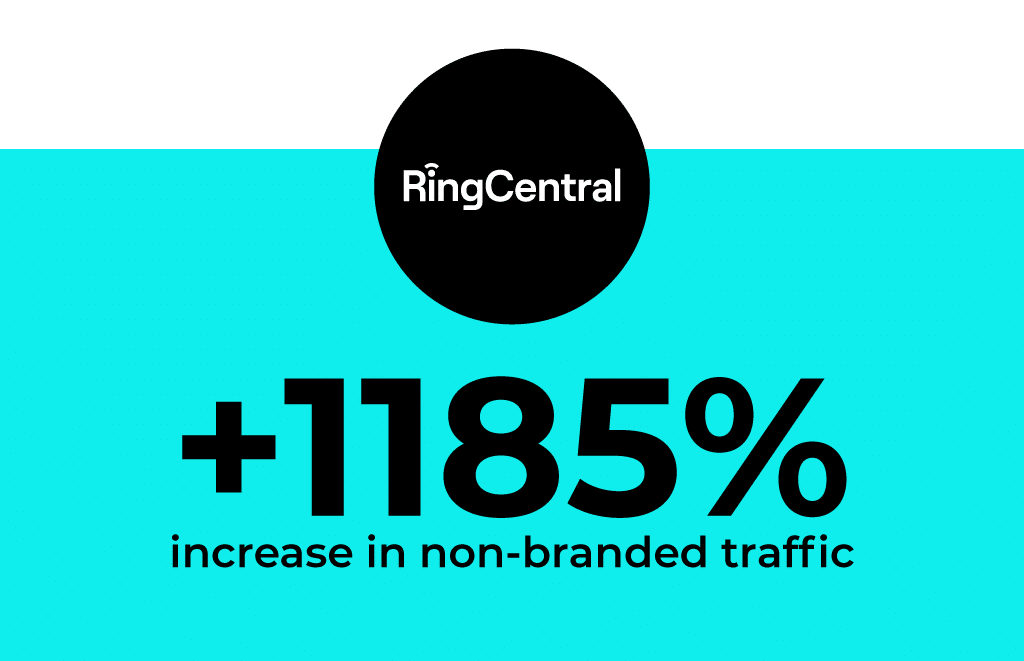
The result? A 1,185% increase in non-branded traffic and a 291% increase in traffic value for the website in a short space of time. This case study illustrates the importance of taking on the right content marketing services and truly making the most of your budget.
Establishing a SaaS marketing budget: Setting goals and seeking expertise
Building a SaaS marketing budget is no easy task, and there’s no simple calculation that suits every brand. With so many variations within the industry, the right figure is very much a bespoke thing.
Most importantly, understanding what’s at stake will help you reach the right figure for your organization. Establishing clear goals for your business and combining this with true marketing expertise will help you navigate the budget landscape, ensuring the very best bang for your buck.
If you need guidance as to where you should be spending your marketing budget, get in touch with accelerate agency today. Our team of dedicated SaaS specialists is on hand to help supercharge your SaaS marketing strategy.
Book a Consultation
FAQs about SaaS marketing budgets
Why do SaaS companies need a marketing budget?
What good is having a stellar SaaS company if nobody has heard of you? A marketing budget allows a business to establish a brand presence, acquire and retain customers, and drive revenue growth. Marketing activities such as advertising, content creation, and lead generation are essential for raising product awareness, educating potential customers, and nurturing relationships throughout the customer lifecycle.
Do SaaS budgets vary by growth stage?
Yes. Early-stage startups may allocate a higher percentage of their budget to customer acquisition to fuel rapid growth and market penetration. In contrast, mature SaaS companies may prioritize retention, upselling, and expansion strategies, allocating resources accordingly. It’s all relative!
What is the current benchmark for SaaS marketing spend?
The current benchmark for SaaS marketing spend typically falls between 10% to 20% of annual revenue. However, the exact percentage may vary based on factors such as company size, growth goals, target market competitiveness, and the stage of the business lifecycle.
How much do SaaS companies spend on marketing activities?
On average, SaaS companies allocate approximately 12% to 15% of their annual revenue towards marketing activities. These activities encompass various strategies and tactics, including digital advertising, content marketing, social media, email campaigns, events, and partnerships.
What percentage of sales should be spent on marketing?
SaaS companies typically allocate around 10% to 15% of their total sales revenue towards marketing efforts. This percentage ensures a balance between investing in customer acquisition, retention, and growth initiatives while maintaining profitability and sustainable business growth.
How do you calculate a SaaS marketing budget?
Calculate a SaaS marketing budget by first setting revenue targets and determining the desired growth rate. Next, assess customer acquisition costs (CAC), lifetime value (CLTV), and the marketing channels with the highest ROI. Allocate funds based on these factors while considering market trends and competitive benchmarks.
What factors influence marketing budget allocation?
Target market size, customer acquisition costs, competitive landscape, product lifecycle stage, growth goals, marketing channel effectiveness, and overall business objectives all influence marketing budget allocation.
What marketing channels have the highest ROI?
Marketing channels with the highest ROI for SaaS companies often include content marketing, search engine optimization (SEO), email marketing, referral programs, social media advertising, and targeted paid advertising campaigns. However, the effectiveness of each channel may vary depending on the specific industry, target audience, and product offering.
How do I know if I’m overinvesting or underinvesting?
Determine if you’re overinvesting or underinvesting in marketing by comparing your spending to industry benchmarks, assessing ROI from different channels, monitoring customer acquisition costs (CAC), and evaluating the overall impact on revenue growth and profitability.
What is the best SaaS marketing strategy?
The best SaaS marketing strategy depends on factors such as target audience demographics, competitive landscape, product differentiation, and business objectives. However, effective strategies often involve a combination of inbound marketing, content marketing, search engine optimization (SEO), email marketing, and personalized customer engagement tactics.
How do I create a SaaS marketing plan?
Everyone loves it when a plan comes together. Conduct market research, define your target audience personas, set clear objectives and key performance indicators (KPIs), and identify the most effective marketing channels. You should also develop compelling messaging and content, implement a content calendar, and measure success through analytics and continuous optimization efforts.